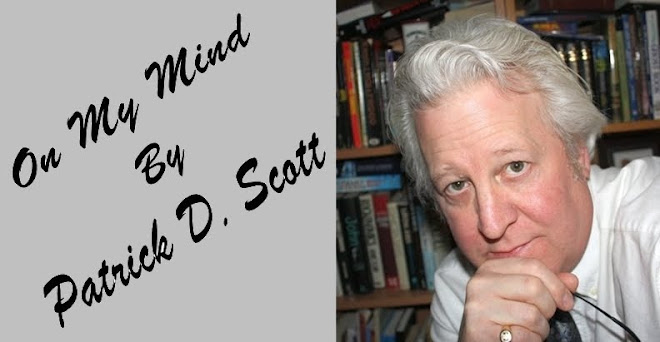Counting among our city’s instantly recognizable images are the cupola of City Hall, which adorns our official website and the masthead of the Kingston Whig-Standard and the Shoal Tower - part of the Murney Tower system - which flies on the official city flag and so proudly worn on city politicians’ lapels. But we may have bested the big cities by at least one icon.
 The Lion in MacDonald Park has been a fixture for as long as I can remember. I know I climbed all over him when I was a kid and can only imagine how many other children have clambered over his back and sat astride this cast iron statue. When you consider the number of transient citizens who have passed through Kingston as students or as part of the military who have been posted here or even the permanent residents of the city and outlying area, who have visited the Park, the number of people who have sat on the lion or been photographed on him truly boggles the mind. More than once, my own three children sat astride his back vying for right to be the one at the front to grab and hold on his mane.
The Lion in MacDonald Park has been a fixture for as long as I can remember. I know I climbed all over him when I was a kid and can only imagine how many other children have clambered over his back and sat astride this cast iron statue. When you consider the number of transient citizens who have passed through Kingston as students or as part of the military who have been posted here or even the permanent residents of the city and outlying area, who have visited the Park, the number of people who have sat on the lion or been photographed on him truly boggles the mind. More than once, my own three children sat astride his back vying for right to be the one at the front to grab and hold on his mane. At lunch a few days ago, my sister Jane and I were reminiscing about the Lion. Neither one of us knew how long it had been there or what purpose he represented, besides being a drawing point for children of every age. I decided to see whether I could find out more about him.
The Lion- as far as I can tell there really isn’t any other name given to him - was donated to the city by the family of former Mayor John Gaskin who held that office in 1882. To say he was a political animal is slightly understating history. He was a fiery, feisty Irish Orangeman who wielded his weight where and when he could to advance the Protestant rights in the city. He was hot tempered, foul-mouthed and outrageously anti-Catholic which may explain why he served only one year in office. But, as a businessman, he was successful. A Great Lakes Captain for the Montreal Transportation Company, he relocated ship building to the city and became a very wealthy man along the way .
One of the homes he lived in was at the corner of Ontario and Princess Streets where the Cornerstone Gallery now stands. It was in front of one of his houses that the Lion once stood guard. Along side him was a cannon that Mr. Gaskin fired off every July 12 in commemoration of the Siege of Londonderry in 1689. This was a proud moment in Orangeman history as they defended and survived against the British siege under King James II. The cannon that Mr. Gaskin fired off, was one of the cannons used in the actual defense and presently stands on the lawn of the St. Andrew Church at the corner of Princess and Clergy Streets.
But back to the Lion. Mr Gaskin was the man who was responsible for gaining city ownership of the lands in the area now known as MacDonald Park, land once held by the military. He died in 1908 and the Lion was donated to the city by his family and was commemorated when the Park opened in 1909 thus marking its’ one hundred years of presence in the Park this year.
Given his one hundred years of standing stoutly outdoors and being exposed to not only the elements, but also to many, many bums sliding over its surface over those years - and throw in some unauthorized and rather bizarre paint schemes - it is no wonder that the Lion is feeling his age. One of his forepaws has a hole in the side, which time will only eat away; his back and hindquarter are worn smooth, far below any protective coatings that may have been on him when he was first cast, making him even more vulnerable to decay.
I did some cursory research into trying to find out the manufacturer of the statue, which involved among other things, crawling on my back under the Lion to find any markings. My closest match was a similar cast iron sculpture from an antique dealer in New York. J. W. Fiske was one of the most prolific and famous cast iron foundries in the United States and did cast iron lions around 1880. Considering that Mr. Gaskin was a Great Lakes captain, it is not to difficult to imagine that he could have picked up this statue on his travels. A Fiske cast iron statue was painted to resembled a bronze finish, which may explain why at times the Lion has been described by historians and journalists as bronzed.
As a hundredth birthday present for the Lion, it would be nice if the city could find the funds to refurbish him to his former glory and give another century of joy to the countless children and adults who love to crawl over his back. In these times, I realize that this is highly unlikely - the $10,000 needed to complete this job is probably earmarked for other projects. It is unfortunate that the cost of some of the studies done for other projects is more than this complete restoration. In my opinion, studies are not nearly as valuable or more important than heritage.
When you are next down at MacDonald Park, give the Lion a pat on his regal head and wish him a happy birthday and let him know that in the hearts of many people that although he may not be the King of the jungle anymore, he is truly the King of Kingston.


